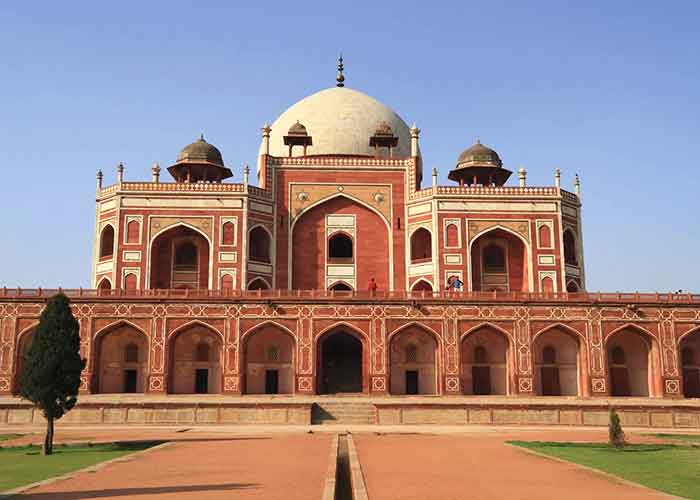50 more sites across India on UNESCO’s Tentative List, await upgrade

New Delhi: India is home to a variety of heritage sites, only few of which come under UNESCO World Heritage Sites. With Rabindranath Tagore’s Santiniketan in West Bengal and Sacred Ensembles of the Hoysalas in Karnataka added to the list, India’s count now stands at 42. The national capital has three such cultural properties.
The distinguishing feature of a World Heritage Site is its exhibition of India’s diverse architectural brilliance and cultural depth, along with its historicity. India boasts of 34 cultural sites, 7 natural sites and 1 mixed site that bears both natural and cultural significance (Sikkim’s Khangchendzonga National Park).
Further, as many as 50 sites in India, from the Neolithic settlement in Burzahom to the Baha’i temple of Delhi, are on the UNESCO World Heritage Tentative List.
Shantiniketan, for example, embodies the explanation of its new status: Established by the Nobel laureate, poet and philosopher Rabindranath Tagore in 1901, Santiniketan was a centre for art founded on ancient Indian traditions and it harboured a vision of the unity of humanity transcending religious and cultural distinctions.
In 1921, Shantiniketan came to be known as a “world university” and “Visva Bharati” and marked itself apart from the prevailing European ways in form and spirit-the British modernism and the colonial architectural orientations of the early 20th century.
A World Heritage Site listed by UNESCO must quintessentially be a unique landmark which geographically and historically stands out owing to its cultural or physical significance.
These sites are maintained by the international World Heritage Programme, which is administered by the UNESCO World Heritage Committee.
The ‘living city’ of Delhi has in its precincts the remains of over a thousand years in different states of preservation. The city’s surviving historic urbanscape includes four regions–Mehrauli, Nizamuddin, Shahjahanabad and New Delhi-that have retained their historicity.
Delhi developed historically in a triangular pattern along river Yamuna on one side and the Aravalli range on the other two sides.
Additionally, Delhi was a strategically located region on an important trade route that ran along the Gangetic plain and merged with the Silk Route.
Archaeological findings reveal numerous cultural layers from the third century BCE to fourth century BCE to the Mughal era, in addition to pottery fragments that date back to nearly 1000-500 BCE.
The precincts of Mehrauli, Nizamuddin, Shahjahanabad and New Delhi are being proposed to earn Delhi the nomination for a World Heritage City. But as of now, these precincts house the city’s three World Heritage Sites.
The Heritage Conservation Committee, though existing since 1983, was given a fresh orientation in 2004 by the Supreme Court of India to include provisions for the protection of heritage buildings, heritage precincts and natural feature areas in Delhi.
The World Heritage Sites in the national capital are the Red Fort complex, Humayun’s tomb and Qutub Minar and its surrounding structures.
The earliest of these is Qutub Minar. Few kilometers south of what was then Dilli, in the 13th century, the 72.5 metre-high red sandstone tower was erected. This tower tapers from a diameter of 14.32 metre at its base to 2.75 metre at its peak, and has alternating angular and rounded flutings.
The foundation of Qutub Minar was laid by Qutab-ud-din Aibak in 1192, right after conquering Delhi’s last Hindu kingdom. It was completed by Iltutmish in 1193.
The surrounding archaeological area contains funerary buildings. The Alai-Darwaza built in 1311, stands out as the masterpiece of Indo-Muslim Afghan architecture. The surrounding monuments include two mosques, one of which is the oldest in northern India (Quwwatu’l-Islam).
These monuments were built from the remains of nearly 20 Hindu temples that previously stood there.
We had earlier reached out to Prof Vipul Singh, historian and faculty at University of Delhi, when he explained that “Temples were identified with rulers of a region. Much wealth was hidden in those temples. Muslim invaders looted temples, then they demolished the temples and used the materials to construct their own mosques over it.”
Second, Humayun’s Tomb is said to be Delhi’s first grand dynastic mausoleum that became a prelude to Mughal architecture. It was built in the 1560’s under the patronage of the succeeding emperor and Humayun’s son Akbar.
Persian and Indian craftsmen got together to accomplish this garden-tomb, which is believed to be the grandest tomb in the Islamic world until then. The tomb replicates the Quranic charbagh–a four quadrant garden with the four rivers as said to be in paradise.
This architectural style inspired many buildings made subsequently rose to its peak 80 years later with the construction of Taj Mahal.
Third, the Red Fort complex, built by Shah Jahan between 1639 to 1648, was the palace fort of the city of Shahjahanabad – the new capital of the fifth Mughal emperor of India. Characterised by massive red sandstone walls surrounding the fort, it is adjacent to the older Salimgarh fort built by Islam Shah Suri in 1546. The two forts together form the Red Fort Complex. The Red Fort was later occupied and used by the British military.
Although Delhi houses only three World Heritage Sites, it is dotted with numerous historical structures that are tourist attractions for both locals as well as for international visitors.
The tag of a World Heritage Site contributes significantly to the conservation and maintenance of these sustaining pieces of antiquity, but the several other monuments that are devoid of any protective label are no less an echo from history.


